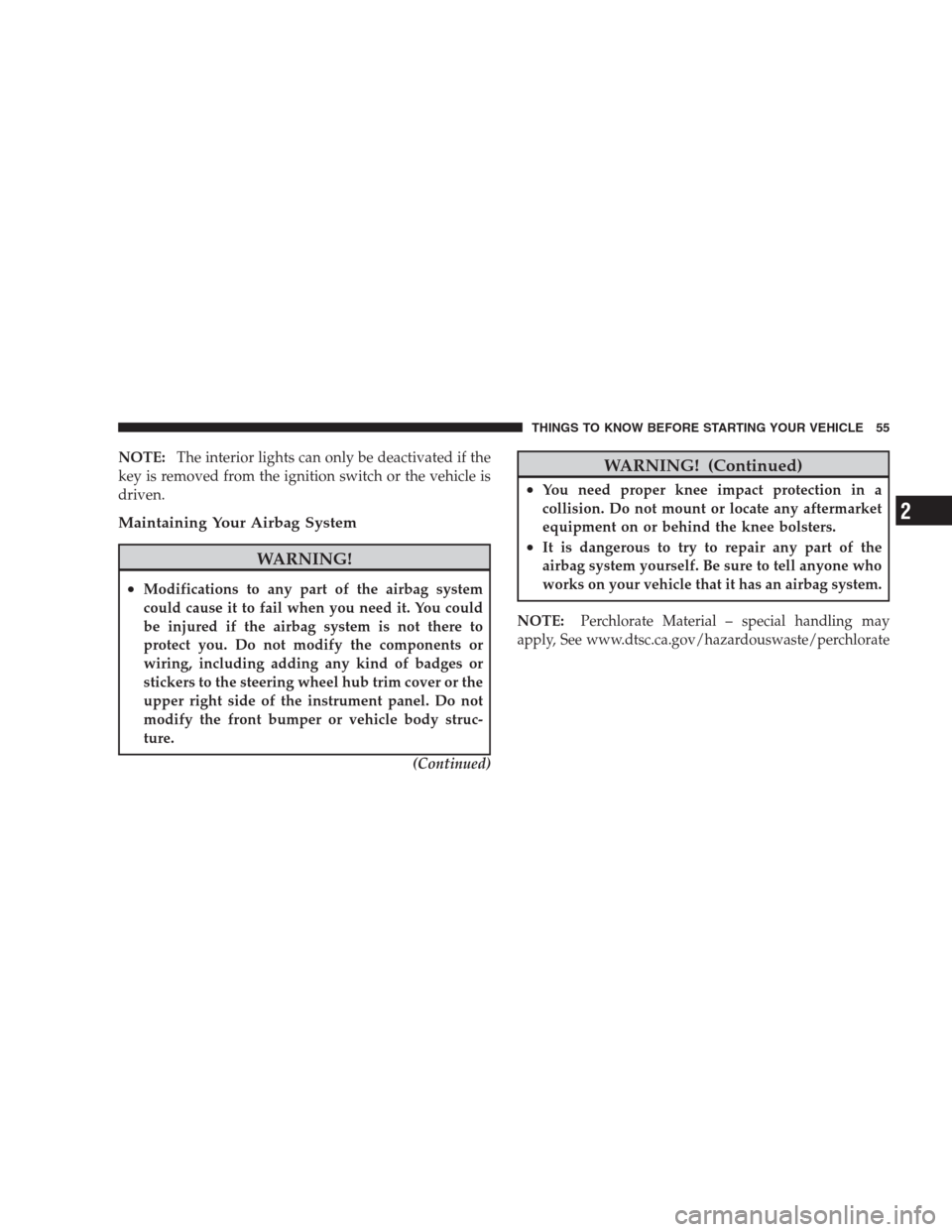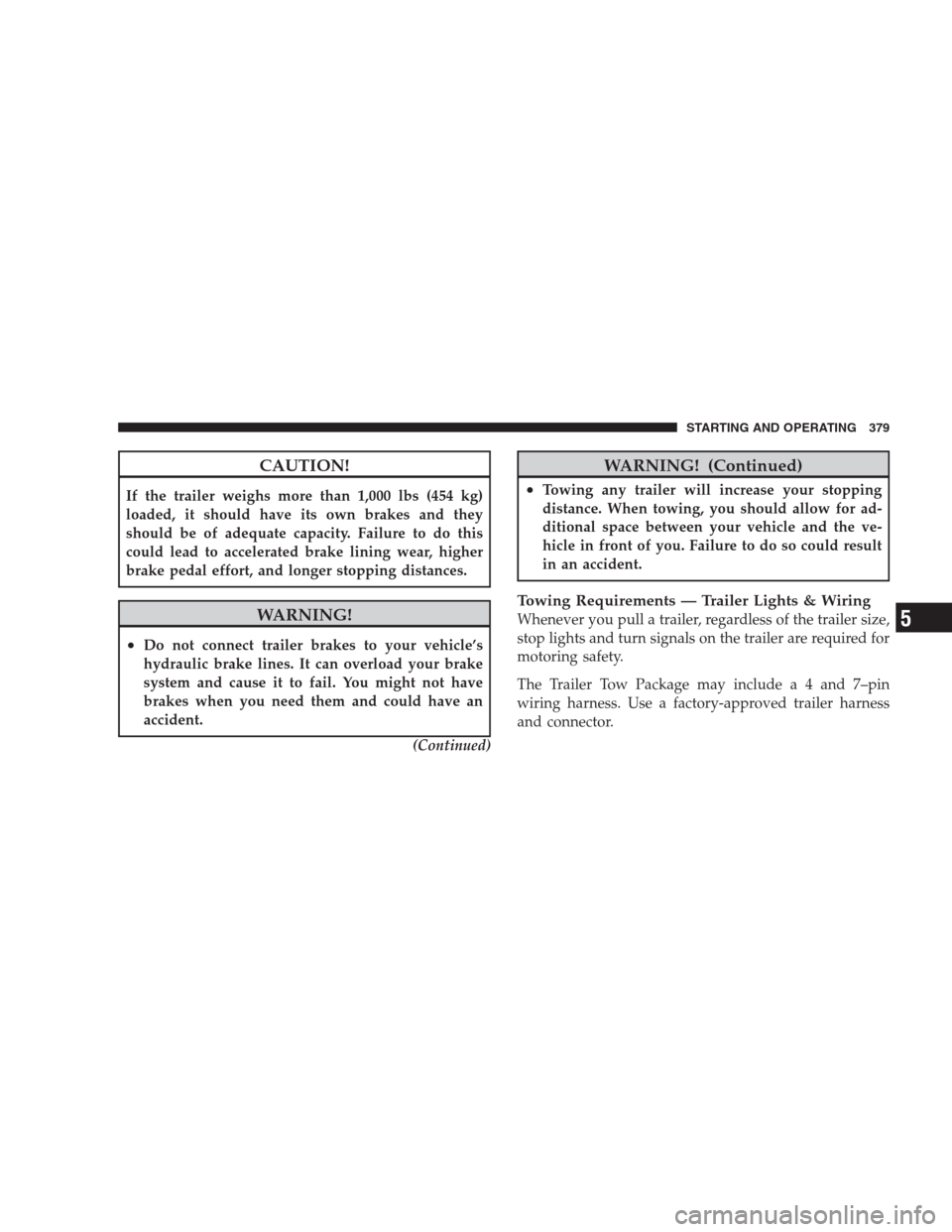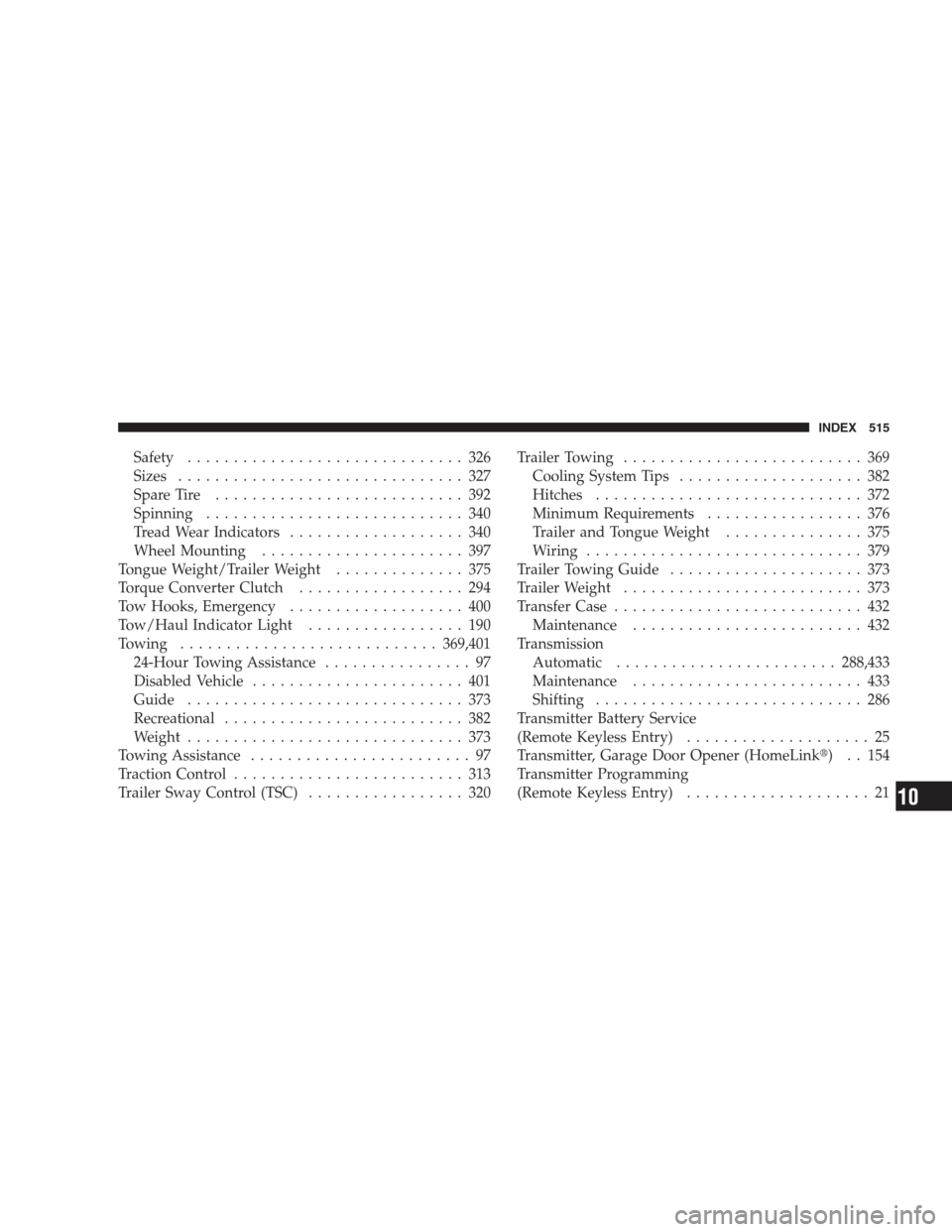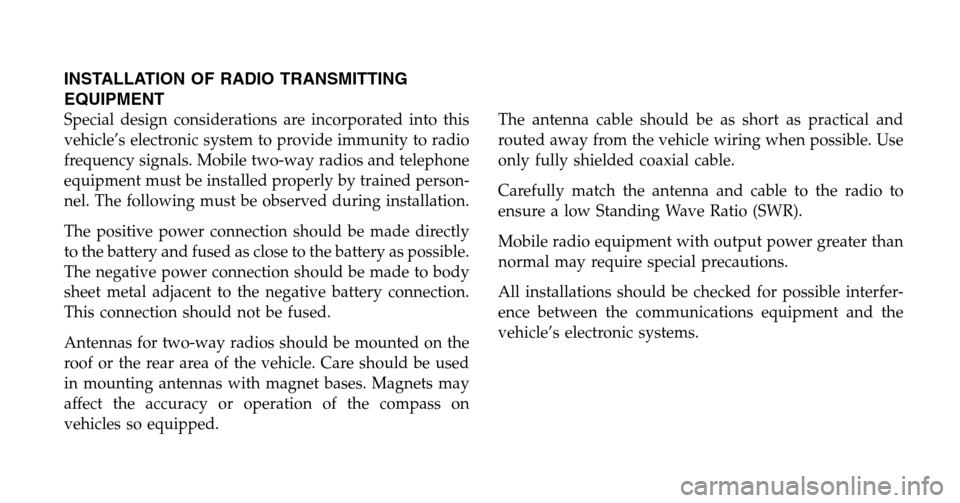Page 53 of 521

Airbag System Components
The airbag system consists of the following:
•Occupant Restraint Control (ORC)
•Airbag Warning Light
•Driver Airbag
•Passenger Airbag
•Side Curtain Airbags above Side Windows
•Side Remote Acceleration Sensors
•Driver Side Seat Track Position Sensor
•Steering Wheel and Column
•Instrument Panel
•Interconnecting Wiring
•Knee Impact Bolsters
•Front Acceleration Sensors
•Driver and Front Passenger Seat Belt Pretensioners
How the Airbag System Works
•
TheOccupant Restraint Control (ORC)determines if
a frontal, side, or rollover collision is severe enough to
require the front and/or side airbags to inflate. The
front airbag inflators are designed to provide different
rates of airbag inflation from direction provided by the
ORC. The ORC will detect roll overs, not rear impacts.
The ORC also monitors the readiness of the electronic
parts of the system whenever the ignition switch is in
the START or ON positions. These include all of the
items listed above except the knee bolster, the instru-
ment panel, and the steering wheel and column. If the
key is in the LOCK position, in the ACC position, or
not in the ignition, the airbags are not on and will not
inflate.
THINGS TO KNOW BEFORE STARTING YOUR VEHICLE 51
2
Page 57 of 521

NOTE:The interior lights can only be deactivated if the
key is removed from the ignition switch or the vehicle is
driven.
Maintaining Your Airbag System
WARNING!
•Modifications to any part of the airbag system
could cause it to fail when you need it. You could
be injured if the airbag system is not there to
protect you. Do not modify the components or
wiring, including adding any kind of badges or
stickers to the steering wheel hub trim cover or the
upper right side of the instrument panel. Do not
modify the front bumper or vehicle body struc-
ture.
(Continued)
WARNING! (Continued)
•You need proper knee impact protection in a
collision. Do not mount or locate any aftermarket
equipment on or behind the knee bolsters.
•It is dangerous to try to repair any part of the
airbag system yourself. Be sure to tell anyone who
works on your vehicle that it has an airbag system.
NOTE:
Perchlorate Material – special handling may
apply, See www.dtsc.ca.gov/hazardouswaste/perchlorate
THINGS TO KNOW BEFORE STARTING YOUR VEHICLE 55
2
Page 381 of 521

CAUTION!
If the trailer weighs more than 1,000 lbs (454 kg)
loaded, it should have its own brakes and they
should be of adequate capacity. Failure to do this
could lead to accelerated brake lining wear, higher
brake pedal effort, and longer stopping distances.
WARNING!
•Do not connect trailer brakes to your vehicle’s
hydraulic brake lines. It can overload your brake
system and cause it to fail. You might not have
brakes when you need them and could have an
accident.
(Continued)
WARNING! (Continued)
•Towing any trailer will increase your stopping
distance. When towing, you should allow for ad-
ditional space between your vehicle and the ve-
hicle in front of you. Failure to do so could result
in an accident.
Towing Requirements — Trailer Lights & Wiring
Whenever you pull a trailer, regardless of the trailer size,
stop lights and turn signals on the trailer are required for
motoring safety.
The Trailer Tow Package may include a 4 and 7–pin
wiring harness. Use a factory-approved trailer harness
and connector.
STARTING AND OPERATING 379
5
Page 517 of 521

Safety.............................. 326
Sizes............................... 327
Spare Tire........................... 392
Spinning............................ 340
Tread Wear Indicators................... 340
Wheel Mounting...................... 397
Tongue Weight/Trailer Weight.............. 375
Torque Converter Clutch.................. 294
Tow Hooks, Emergency................... 400
Tow/Haul Indicator Light................. 190
Towing............................369,401
24-Hour Towing Assistance................ 97
Disabled Vehicle....................... 401
Guide.............................. 373
Recreational.......................... 382
Weight.............................. 373
Towing Assistance........................ 97
Traction Control......................... 313
Trailer Sway Control (TSC)................. 320Trailer Towing.......................... 369
Cooling System Tips.................... 382
Hitches............................. 372
Minimum Requirements................. 376
Trailer and Tongue Weight............... 375
Wiring.............................. 379
Trailer Towing Guide..................... 373
Trailer Weight.......................... 373
Transfer Case........................... 432
Maintenance......................... 432
Transmission
Automatic........................288,433
Maintenance......................... 433
Shifting............................. 286
Transmitter Battery Service
(Remote Keyless Entry).................... 25
Transmitter, Garage Door Opener (HomeLink�) . . 154
Transmitter Programming
(Remote Keyless Entry).................... 21
INDEX 515
10
Page 520 of 521

INSTALLATION OF RADIO TRANSMITTING
EQUIPMENT
Special design considerations are incorporated into this
vehicle’s electronic system to provide immunity to radio
frequency signals. Mobile two-way radios and telephone
equipment must be installed properly by trained person-
nel. The following must be observed during installation.
The positive power connection should be made directly
to the battery and fused as close to the battery as possible.
The negative power connection should be made to body
sheet metal adjacent to the negative battery connection.
This connection should not be fused.
Antennas for two-way radios should be mounted on the
roof or the rear area of the vehicle. Care should be used
in mounting antennas with magnet bases. Magnets may
affect the accuracy or operation of the compass on
vehicles so equipped.The antenna cable should be as short as practical and
routed away from the vehicle wiring when possible. Use
only fully shielded coaxial cable.
Carefully match the antenna and cable to the radio to
ensure a low Standing Wave Ratio (SWR).
Mobile radio equipment with output power greater than
normal may require special precautions.
All installations should be checked for possible interfer-
ence between the communications equipment and the
vehicle’s electronic systems.